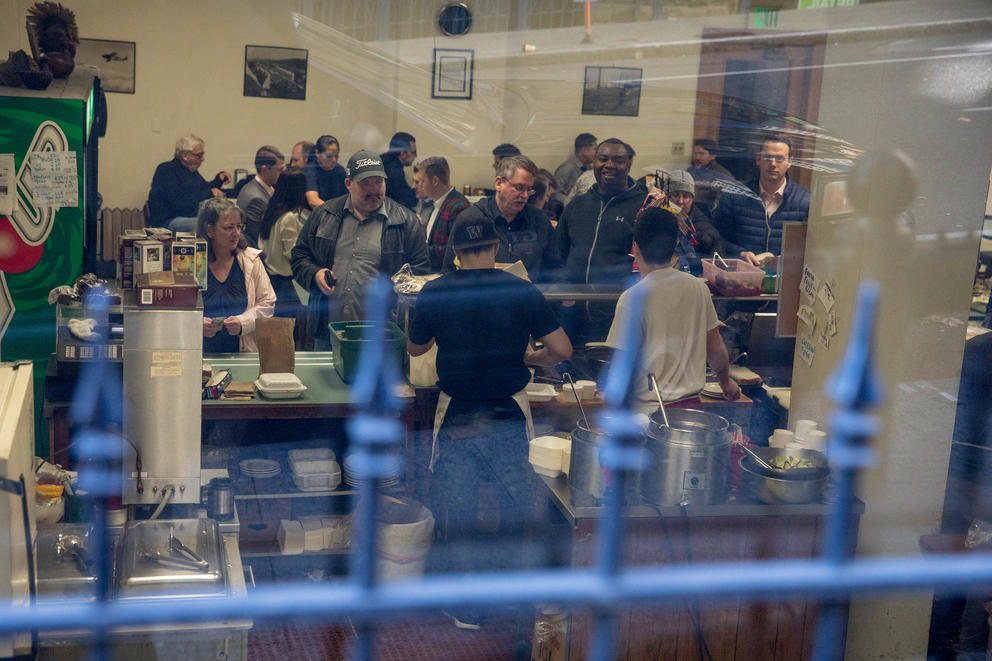In recent months, Seattleites have said goodbye to many favorite eateries. Loud laments have been expressed over the loss of places such as Bakeman’s, Two Bells Tavern and the original 13 Coins, just off Denny. In a city that’s changing so rapidly, the sense of loss of longtime haunts is intense.
My theory of why this is so is simple: We are what we eat. That’s an old idea that ties us to place and forms the basis of human culture. Yes, we feel bad about the demolition of a heritage building or the closing of a classic hardware store, but places where we were nourished and that nurtured our appetites—those losses have a special bite.
It seems kind of silly to say a sad farewell to old eateries in a town that’s experiencing a boom in new restaurants, food trucks and farmers’ markets. But food and nostalgia have long been linked, at least since Proust dipped his madeleine in a cup of tea and spawned a world of memories.
But being what we eat has another dimension: It can be a road map to who we are, and for Americans, knowing who we are can be complicated, given our origins from around the world: immigrants, settlers, slaves, refugees, adventurers and indigenous peoples.
I did genetic testing for my family history through the site 23andMe and discovered that I am 99.9 percent European, and of that, 97 percent northwestern European. Despite my Scandinavian name, I am mostly British and Irish, genetically, with Nordic, French and German ancestry. Culturally, however, the strongest components of my upbringing were the influence of grandparents whose ancestors came over on the Mayflower, and my Norwegian grandfather and my Scottish grandmother, who immigrated to Seattle in the early 20th century.
I didn’t really need genetic mapping to tell me who I was, because there was another trail that helped me: my mother’s family recipe book.
I recently came across my mother’s stash of family recipes and decided to go through them to make copies of the best for the rest of my family. My mother is 101 years old and she no longer cooks, but her collection of family recipes is not only a map of our childhood, remembered one dish at a time, but also a kind of chart of our heritage. It includes recipes handed down from 19th-century family cooks.
For example, one of the first recipes I came across was for “Mother’s Tomato Aspic.” This referred to my maternal grandmother, a Victorian lady born in the 1880s. Contemporary foodies may have rediscovered aspic—a kind of cold gelatin dish—but its presence in the recipe collection suggests my grandmother thought it was the kind of dish every girl should know how to make for her husband. Its ingredients include cayenne, paprika, garlic, onion and black pepper, so it’s no bland, Midwestern Jell-O salad. Still, it seems like a call from a time of formal dining when ties and dresses were worn at the dinner table.
Another recipe that has survived is Grandpa’s “Vinegar Candy.” For this one, you boil butter, vinegar and sugar, and then spoon it into ice water with nuts to make a kind of brittle candy. The note on this recipe says, “Elegant for munching while being read aloud to.” While my Mayflower-descended grandparents were great readers, this simple recipe also reminds me that my grandpa, who came through Seattle en route to the Klondike Gold Rush, enjoyed simple pleasures. Such candy could be made in primitive conditions—even ice-cold ones—where boiling anything could not be taken for granted.
My family’s ethnic heritage shows up in numerous recipes. There is my Scottish granny’s hard-to-reproduce recipe for shortbread, the instructions for which appear to be purposely misleading or vague so that the secret of perfect cookies died with her.
There are recipes for Scandinavian dishes adored by my Norwegian grandfather: fårikål, which is slow-steamed lamb chops and cabbage served with boiled potatoes and flatbrød, a crispy unleavened bread. And boiled halibut smothered in butter-and-egg sauce. We ate these meals when I was a child.
The family recipe collection is also filled with dishes tied not just to genes, but place: multiple versions of baked or grilled salmon; salmon soufflé using canned salmon, “an old Berger standby for unexpected guests,” my mother recorded in her notes. Although, knowing my mother’s disdain for drop-ins, my hunch is that this dish was meant as a deterrent to future visits. We always had canned salmon on the pantry shelves for such social emergencies.
My mother loved to make jam during our summers in the San Juans. In her collection is a recipe clipping for “Salal Berry Jelly.” The salal berry was a staple of the Salish peoples, but it is ripe only briefly, and its seediness does not lend itself to jam. A jelly, perhaps, though harvesting and preparing its berries seem like a lot of work for little reward as compared with blackberries. Still, this is a recipe one would only find here.
These family recipes connect the generations. We ate what our Victorian, gold prospector, Norwegian and Scottish immigrant ancestors ate, plus foods that sustained local indigenous peoples. We ate plenty else, too: tofu casseroles, Wonder Bread, mac and cheese. Each dish tells a little story about who we are and where we came from. Mom’s family recipes are a chart of our dietary DNA. If we can’t have Bakeman’s and Two Bells, at least we have those.
This article appears in Seattle Magazine's March 2018 issue.



